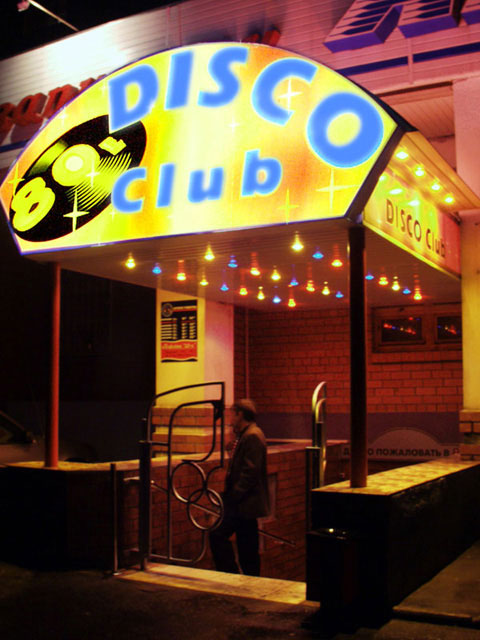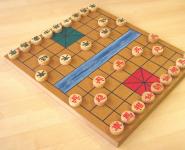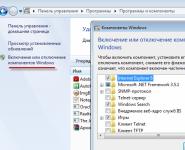The rules of the game in the pool on the pages of tverclub.ru
=> Rules of the game in the pool
Rules for playing *pool* (Pool).
Pool from English into Russian is translated as billiards. I mean, it's about the same thing. We can say that *pool* is billiards played by Americans, and Russian billiards is *pool* played by Russians.
There are enough differences - in American billiards the table is smaller, the pockets are wider, there are restrictions on which balls can be hit when and where to score them. It has become common to call American billiards *pool*.
Without imploring any advantages of Russian billiards, it should be noted that *pool* is a much more dynamic and unpredictable game. Apparently, therefore * pool * is more common in nightclubs, billiard rooms and even in cafes.
These rules are introductory for beginners. If someone feels strong in himself and wants to know more details, then they can be viewed at www.pool.ru

Arrangement:
According to the general rules, the *pool* game is played with 16 balls. 15 of them are numbered. From 1 to 7 balls *whole* - each of the same color. From 9 to 15 *striped* or *half-shaped* - halved by a white stripe. During the game, whole and striped balls are divided between opponents.
The number 8 ball is black, must be pocketed at the end of the game into a certain pocket before the opponent to win, and must not be pocketed, even by accident, before all one's own balls have been pocketed.
A white ball without a number is called *cue ball*. All blows are applied by both opponents with a cue on him. He, in turn, must hit his (*whole* or *striped*) ball and not get into the pocket.
Before the start of the game, the balls are placed in a triangle, all must touch each other tightly. The front ball is located at the rear mark. In the second row there is one whole and one striped balls. In the third: in the center there is a figure eight, along the edges one *whole* and one *striped* balls. In the fourth row through one 2 *whole* and 2 *striped* balls. The last fifth row contains the remaining balls, while the corner ones must be different - *whole* and *striped*.
Sometimes the balls are arranged in a different way. Basic rules - *whole* and *striped* balls of the same color should not stand side by side, they should alternate as much as possible.
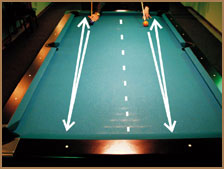
According to the rules, the first stroke must be played. For some reason, this is rarely practiced in Tver. Nevertheless, we briefly describe this procedure. The drawing is carried out before the balls are placed on the table. Both players place two identical balls (preferably two *balls*, but two *full* balls are also possible) in the *house* to the left and to the right of the central longitudinal line (it is not on the field, but it is easy to represent by dots). At the same time strikes in the direction of the opposite wall. The balls must touch it once and come back as close as possible. In this case, the ball should not fall into the pocket, touch the side walls, roll into the opponent's half, touch another ball. The one who makes a mistake loses. If both made a mistake, they replay. The player whose ball is closer to the wall of the house without errors has the right to choose who will hit first. Indeed, it is easier to agree immediately :) ...

Hitting the *ball*, missing the pocket, shot from the hand:
A blow to the * cue ball * must be applied with a sticker (this is such a rubber band on the tip of the cue). Any other blow, as well as touching the balls with a hand or clothing, is counted as a mistake, or a foul, as they say among billiard players.
If you hit the *ball* correctly, it hits the object ball, but it doesn't hit the pocket, that hit doesn't count as a mistake, and the game continues with the opponent.
Shot from the hand - in case * cue ball * flew off the table, or hit a pocket, then it is returned to the table. The player places the ball in the *house*, and strikes outside of it. In this case, the *cue ball* must not touch other balls until it crosses the *home* line. If the cue ball hits a ball that is inside the *house*, it must be delivered through the reflection of the *cueball* from the far short wall.
However, new rules have appeared - a punch from the hand is not necessarily from * home * - but from any point on the table. It is desirable for players to agree in advance on what rules to play.

The first blow is delivered from the hand (from * home *). Even if some balls roll into the pockets, the table is considered open - that is, *whole* and striped balls are not divided between the players. According to some rules, after breaking at least four balls must touch the walls. If this does not happen, the opponent has the right to choose - either to leave everything as it is, or to replay the first blow. To use this rule or not - it is necessary to agree in advance. Most often in Tver, this rule does not apply.
If, after the first hit, *the cue ball* rolls into a pocket, a foul is counted. If the 8th ball rolled, the win is counted. If, after the first hit, the 8 flew off the table (which is very difficult to imagine), it returns to the table and is placed on the *dot*.
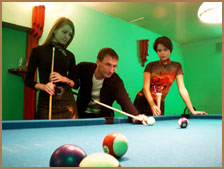
Distribution of *whole* and striped balls between players:
After the first hit, the players hit the *ball*, which in turn must hit any ball except the 8th. If as a result one ball hits a pocket, then the table becomes closed. The ball that hits the pocket determines which balls become the player's balls - whole or striped. If the ball was *whole* - in the future, this player must hit the whole balls with the cue ball until they are all in the pockets. If a player hits the cue ball on the 8th ball or balls of the opponent, a foul is counted, even if this led to his own ball getting into the pocket. A foul is also counted if, together with one's own balls, after hitting the opponent's ball, the ball is rolled into the pocket.
After all *your* balls are pocketed, it is necessary to score the 8th ball with the cue ball into a strictly defined pocket. It is diametrically opposite to the pocket into which the last *own* ball rolled.
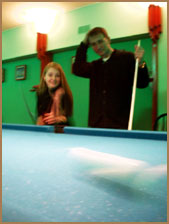
Defeat:
A loss is counted if the 8th ball after hitting hit the pocket before not all *own* balls were pocketed (or *played* in billiard terminology). The same thing happens if the 8th ball flew off the table (except for the first hit), even if, after being reflected from foreign objects, it hit the table again. And if the 8th ball hit the wrong pocket - again defeat. In general, you only win if, after all *your* balls have been potted, you pocket the 8th ball without a foul into *your* own pocket, or if your opponent has lost.
There is a rule that protects a draw - this is if both players make three mistakes. Rarely seen in Tver. It is advisable to agree on this in advance.
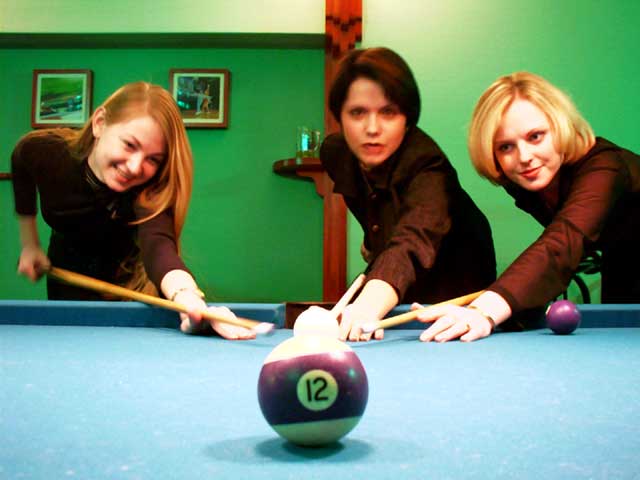
Foul or error:
According to the general rules, the correct hit is if you hit the * cue ball *, and he, in turn, first hit his ball (on * whole * or * half * while they are on the table, or on the 8th after). If at the same time only *your* balls rolled into the pockets - you continue the game. At the same time, the *cue ball* itself must remain on the table.
In almost all other cases, a foul is recognized. That is, the opponent enters the game and at the same time he has the right to re-hit if he made the correct hit, but failed to score a single *his* ball. If the opponent himself made a mistake, the right to re-strike is lost.
The following cases are considered an error: a double strike; if the balls are touched by a hand, clothes, a typewriter, or another part of the cue (except for the sticker); if after hitting * cue ball * falls into the pocket; if the balls fly off the table (except on the 8th, since a defeat is counted); if *foreign* balls are pocketed; if *the cue ball* was the first to hit someone else's or the 8th ball, and so on.
Some strikes are also prohibited. For example, when the cue slides over the ball. Or hit him twice. Or after hitting any of the balls touches the cue. A special case is when *the cue ball* is close to the ball being hit. Such a blow is called *push*. In this case, only a *cutting* blow is allowed - that is, you cannot hit directly.
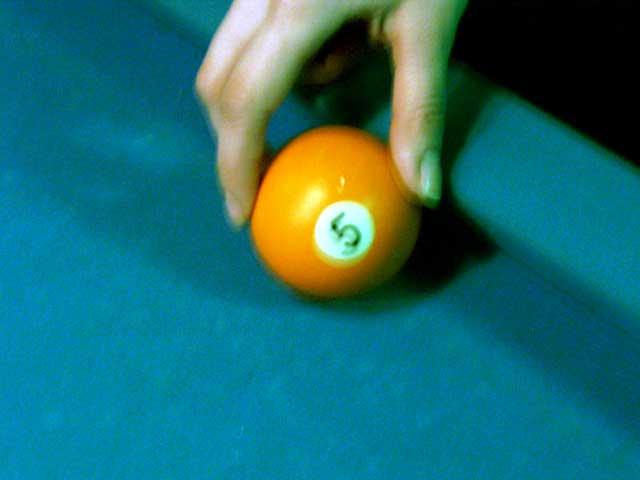
What to do if the ball falls off the table?
There are different ways to return. In sports, the position is restored, and the judge does it. There is a way - the ball is placed against the wall in the place where it crossed the border of the table. In Tver, it is customary to act as follows - the ball is placed on the table by the opponent, at any point, but always against the wall.

Outcome
Isn't it time to stop reading and get down to business? It has long been proven that billiards is one of the healthiest sports. It relaxes, trains concentration and combines thought processes with motor skills. In one game, the player finds about 1.5 kilometers around the table. The main thing is that the room was not smoky.
